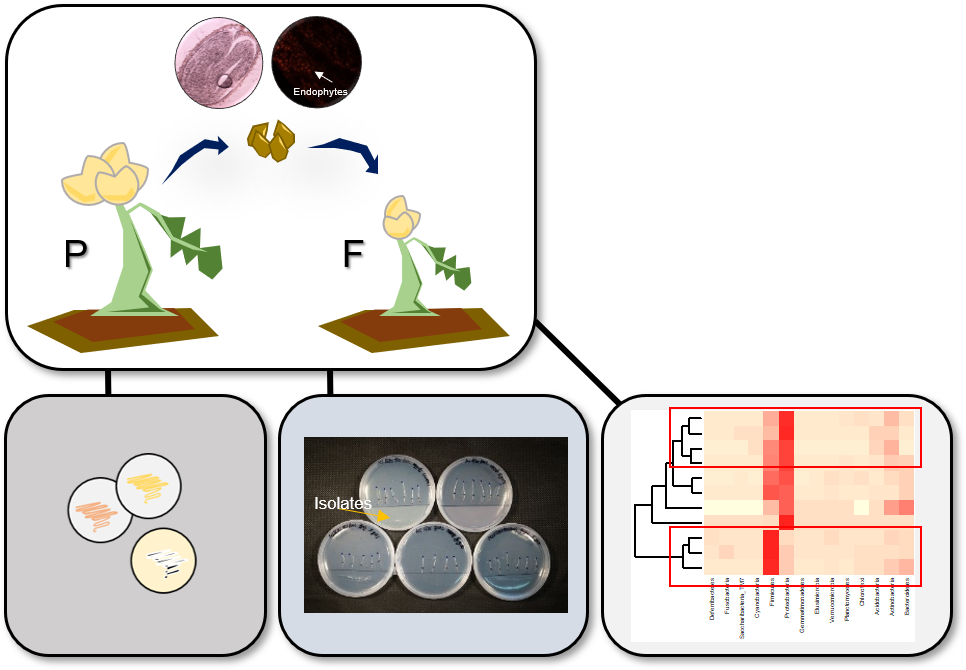Ongoing
Research interest
Environmental conditions change constantly, and so does the distribution of species correspondingly. We are interested in the ecological mechanisms determining species range. Invasive plant species and endangered plants are of particular interest since their distributions alter these days rapidly. For a more complete understanding of species range, we adopt diverse approaches including field demography, plant physiology, and population genetics. In addition, we have been examining the role of microbes within plants (endophytes) in plant adaptation to environmental factors. We believe that our study will provide critical information to predict the future ecosystem under the rapid anthropogenic environmental changes.
Role of seed endophytes on plant ecological traits
Endophytic bacteria give beneficial effects to their host plant through the microbial plant growth-promoting (PGP) abilities. Especially, seed endophytes have an evolutional potential due to their vertical transmission, which is transmitted from parents to their offspring.
• Changes of seed microbiome and its differentiation depending on environmental gradients or stresses
• Screening of PGP abilities which the isolated endophytic bacteria from various plant tissues have
• Changes in PGP responses by the endophytic community composition
• Plants’ responses by introduction of the endophytic bacteria into their tissues.

Natural variation in diaspore traits of Coreanomecon hylomeconoides
Myrmecophyte is a plant which interacts with ants. They have mutualism about protection, pollination, or seed dispersal. In the seed dispersal case, some seeds have a specific appendage called by ‘elaiosome' which is rich-lipid parts for ant attraction. Korean endemic species C. hylomeconoides also myrmecophyte and have diaspore, which is consist of seed and elaiosome. First of all, we should analyze the diaspore traits and find differences to find the relation between elaiosome and ants.
• Analyze the chemical components in elaiosome using LC-MS and GC-MS
• Compare the natural variation of morphological and chemical traits among populations
• Figure out some tendencies about differences or clusters in their traits

Ecological resistance to invasive plant, Humulus japonicus Siebold & Zucc.
Invasive plants reduce species diversity in riparian ecosystems and even harm human health. Humulus japonicus was designated as an invasive species by the Ministry of Environment in 2019. It is necessary to propose an ecological management plan to limit invasion and prevent its spread. Based on the previously proposed 'ecological resistance' hypothesis, the interaction between plant species that grow naturally in the same space as H. japonicus and study the possibility that the species richness of the habitat resists the invasion and establishment of H. japonicus.
• Abiotic and biotic environmental factor characters of habitat of H. japonicus in Yeongsan-gang River
• Ecological resistance to H. japonicus invasion
• Population genetics of H. japonicus along the Yeongsan-gang River

Comparison of bacterial diversity due to logging
In order to understand the changes and recovery of the ecosystem after forest use, it is necessary to understand the characteristics of plants that adapt to the changed environment. To understand this, we will comprehensively study the changes in soil and plant-associated bacterial communities that can affect the characteristics of plants.
• Changes in the environmental due to disturbance
• Changes in bacterial communities around plants due to disturbance
• Understanding the ecological changes of plant species and associated bacterial communities due to disturbance from a comprehensive perpective
